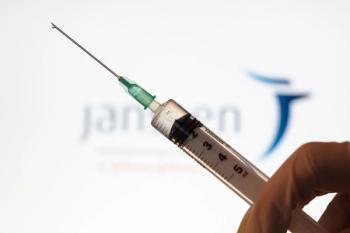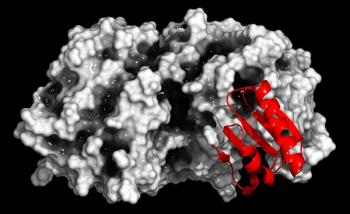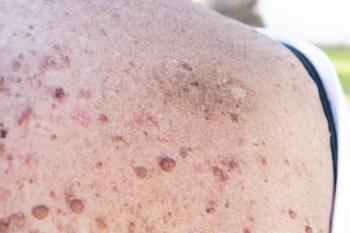
Mid-Year Roundup: FDA’s Novel Retail and Specialty Drug Approvals in 2025
Key Takeaways
- Suzetrigine, a NaV1.8 pain signal inhibitor, offers a nonopioid option for acute pain management, potentially redefining pain treatment standards.
- Mirdametinib, a MEK inhibitor, is the first approved therapy for NF1-PN, showing positive response rates in clinical trials.
Explore the latest FDA-approved novel drugs transforming treatment options for various conditions, enhancing patient care and outcomes in community and specialty pharmacy.
Each year, the FDA approves dozens of novel medicines, those that have never been approved or marketed in the United States. These drugs are critical to the impacted patient populations, who, before these approvals, often lacked a standard-of-care treatment option for their disease. Novel drugs are being developed at a rapid pace, expanding treatment capabilities for millions of patients. Accordingly, it is critical for patients and health care professionals alike to be aware of these novel drugs and their curative potential.1
Below, Pharmacy Times® provides a recap of the novel retail and specialty drug approvals up until June 2025, with related coverage from the Pharmacy Times website. The treatments are indicated for a range of conditions, including hemophilia A and B, respiratory syncytial virus (RSV), and uncomplicated urinary tract infections.1
Suzetrigine (Journavx; Vertex Pharmaceuticals)
Approval Date: January 21, 2025
Indication: For the treatment of moderate to severe acute pain.
Background: Suzetrigine, a selective NaV1.8 pain signal inhibitor, is the first new class of medication to treat pain to hit the market in over 2 decades. At its highest dose, suzetrigine reduced acute pain over a 48-hour period following abdominoplasty or bunonectomy. The medication has the potential to redefine pain management and become a new standard of care, nonopioid option for all patients managing acute pain.2
Related Coverage:
Mirdametinib (Gomekli; SpringWorks Therapeutics)
Approval Date: February 11, 2025
Indication: Approved for use in adult and pediatric patients with neurofibromatosis type 1-associated plexiform neurofibromas (NF1-PN) not amenable to complete resection.
Background: With this approval, mirdametinib is the first approved therapy for adults in this specific NF1-PN population and provides a best-in-class therapy for children with the condition. The treatment is an investigational MEK inhibitor and was approved based on positive clinical trial results from the phase 2b ReNeu study, in which patients with NF1-PN treated with mirdametinib experienced a positive confirmed objective response rate.3
Related Coverage:
Gepotidacin (Bluejepa; GSK)
Approval Date: March 25, 2025
Indication: Treatment of uncomplicated urinary tract infections (uUTIs) in female adult and pediatric patients 12 years and older weighing at least 40 kg.
Background: Gepotidacin was approved for the treatment of uUTIs caused by Escherichia coli, Klebsiella pneumoniae, Citrobacter freundii complex, Staphylococcus saprophyticus, and Enterococcus faecalis. The novel, bactericidal, first-in-class triazaacenaphthylene antibiotic is designed to prevent bacterial DNA replication and provide activity against most target uropathogens, including isolates that are resistant to current antibiotics.4
Related Coverage:
Fitusiran (Qfitlia; Alynlam Pharmaceuticals, Sanofi)
Approval Date: March 28, 2025
Indication: Prophylactic treatment of adult and pediatric patients 12 years and older with hemophilia A or B, regardless of inhibitor status.
Background: Rather than replacing the missing clotting factor that is observed in patients with hemophilia A or B, fitusiran works to reduce the amount of antithrombin in the body, which allows for more effective blood clotting and the rebalancing of hemostasis. Fitusiran is administered once every 2 months subcutaneously and has demonstrated broad effectiveness at reducing rates of annualized bleeding in a series of clinical trials.5
Related Coverage:
Atrasentan (Vanrafia; Novartis)
Approval Date: April 2, 2025
Indication: For use once daily to reduce proteinuria in adults with primary immunoglobulin A nephropathy (IgAN) who are at risk of rapid disease progression.
Background: Atrasentan is an oral treatment that is poised to offer patients and treatment providers a new option for treatment of IgAN, making management easier given the medicine's simple administration and seamless supplementation with supportive care. In a critical development, results from the ALIGN clinical trial demonstrated that adverse events did not differ significantly between patients receiving atrasentan and placebo.6
Related Coverage:
Nipocalimab-aahu (Imaavy; Johnson & Johnson)
Approval Date: April 29, 2025
Indication: Treatment of generalized myasthenia gravis.
Background: Nipocalimab is a monoclonal antibody, designed to block FcRn and reduce levels of circulating immunoglobulin G antibodies without impacting adaptive and essential immune functions. Novel, effective treatments are desperately needed for patients with myasthenia gravis, an autoantibody disease that leads the immune system to mistakenly target antibodies that can disrupt normal signaling from nerves to muscles, impairing muscle movement. Nipocalimab demonstrated a rapid reduction in autoantibody levels from the point of receiving a first dose in a clinical trial.7
Related Coverage:
Acoltremon Ophthalmic Solution 0.003% (Tryptyr; Alcon)
Approval Date: May 28, 2025
Indication: To treat the signs and symptoms of dry eye disease (DED).
Background: FDA approved acoltremon, a first-in-class transient receptor potential melastatin 8 receptor that stimulates corneal sensory nerves to robustly increase the production of natural tears to combat DED. The disease is characterized by a deficiency in natural tears, and common treatment options to increase the production of tears often have accompanying limitations, including slow onset and poor adherence. Results from clinical trials demonstrated that acoltremon increased tear production in up to 4 times more patients in the treatment arm compared with vehicle treatment.8
Related Coverage:
Clesrovimab-cfor (Enflonsia; Merck)
Approval Date: June 9, 2025
Indication: For the prevention of respiratory syncytial virus (RSV) lower respiratory tract disease in neonates and infants who are born during or entering their first RSV season.
Background: Results from the phase 2b/3 CLEVER trial found that a single dose of clesrovimab administered to preterm and full-term infants was effective at reducing the incidence of RSV-associated medically attended lower respiratory infection. Furthermore, there was a positive safety profile that was generally comparable to placebo over the first 150 days. There was an 84.3% reduction in RSV-associated hospitalizations through 5 months, significantly greater than placebo.9
Related Coverage:
Garadacimab-gxii (Andembry; CSL)
Approval Date: June 16, 2025
Indication: Prophylactic use to prevent attacks of hereditary angioedema (HAE) in adults and pediatrics 12 years and older.
Background: Garadacimab-gxii is being marked as the only treatment for HAE that offers once-monthly, subcutaneous self-injections for all patients, being conveniently delivered in 15 seconds or less through a citrate-free autoinjector. Approval was based on positive results from the pivotal phase 3 VANGUARD trial, that found garadacimab was effective in individuals 12 years and older with HAE type 1 or type 2.10
Related Coverage:
REFERENCES
1. FDA. Novel drug approvals for 2025. Last Updated June 17, 2025. Accessed June 18, 2025. https://www.fda.gov/drugs/novel-drug-approvals-fda/novel-drug-approvals-2025
2. Gallagher A. FDA approves suzetrigine, new alternative to opioids for acute pain. Pharmacy Times. Published January 30, 2025. Accessed June 18, 2025. https://www.pharmacytimes.com/view/fda-approves-suzetrigine-new-alternative-to-opioids-for-acute-pain
3. Halpern L. FDA Approves Mirdametinib for Treatment of Adults, Children With NF1-PN. Pharmacy Times. Published February 11, 2025. Accessed June 18, 2025. https://www.pharmacytimes.com/view/fda-approves-mirdametinib-for-treatment-of-adults-children-with-nf1-pn
4. McGovern G. Gepotidacin Receives FDA Approval for uUTIs in Adult, Pediatric Female Patients. Pharmacy Times. Published March 25, 2025. Accessed June 18, 2025. https://www.pharmacytimes.com/view/gepotidacin-receives-fda-approval-for-uutis-in-adult-and-pediatric-female-patients
5. Halpern L. FDA Approves Fitusiran For Prophylactic Hemophilia A, B Treatment Regardless of Inhibitor Status. Pharmacy Times. Published March 28, 2025. Accessed June 18, 2025. https://www.pharmacytimes.com/view/fda-approves-fitusiran-for-prophylactic-hemophilia-a-b-treatment-regardless-of-inhibitor-status
6. Halpern L. FDA Grants Accelerated Approval to Atrasentan for Proteinuria Reduction in Primary IgA Nephropathy. Pharmacy Times. Published April 3, 2025. Accessed June 18, 2025. https://www.pharmacytimes.com/view/fda-grants-accelerated-approval-to-atrasentan-for-proteinuria-reduction-in-primary-iga-nephropathy
7. McGovern G. FDA Approves Nipocalimab-Aahu to Treat Patients With Generalized Myasthenia Gravis. Pharmacy Times. Published April 30, 2025. Accessed June 18, 2025. https://www.pharmacytimes.com/view/fda-approves-nipocalimab-aahu-to-treat-patients-with-generalized-myasthenia-gravis
8. Antrim A. FDA Approves Acoltremon Ophthalmic Solution 0.003% for Signs, Symptoms of Dry Eye Disease. Pharmacy Times. Published May 28, 2025. Accessed June 18, 2025. https://www.pharmacytimes.com/view/fda-approves-acoltremon-ophthalmic-solution-0-003-for-signs-symptoms-of-dry-eye-disease
9. Ferruggia K. Clesrovimab Receives FDA Approval for RSV Lower Respiratory Tract Prevention in Infants. Pharmacy Times. Updated June 10, 2025. Accessed June 18, 2025. https://www.pharmacytimes.com/view/clesrovimab-receives-fda-approval-for-rsv-lower-respiratory-tract-prevention-in-infants
10. Ferruggia K. Garadacimab-gxii Receives FDA Approval for Hereditary Angioedema Treatment. Pharmacy Times. Published June 17, 2025. Accessed June 18, 2025. https://www.pharmacytimes.com/view/garadacimab-gxii-receives-fda-approval-for-hereditary-angioedema-treatment
Newsletter
Stay informed on drug updates, treatment guidelines, and pharmacy practice trends—subscribe to Pharmacy Times for weekly clinical insights.















































































































































































































